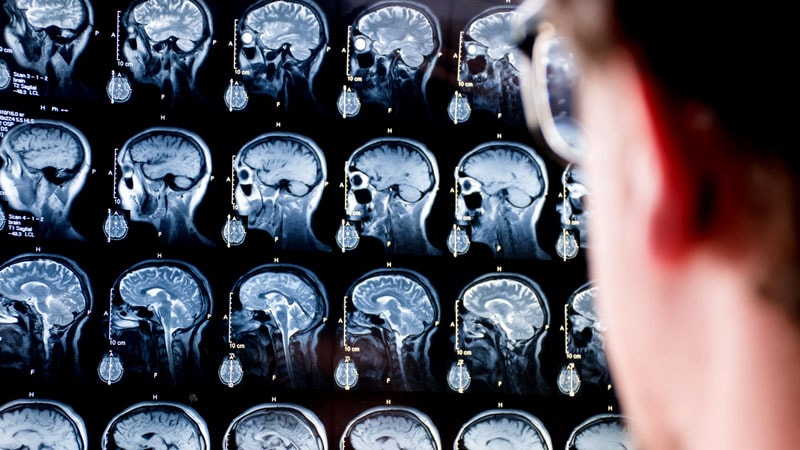Breakthrough in Low-Field Whole-Body MRI: Safer, Cheaper, and More Accessible Technology
Core Concepts
Researchers have developed a low-field, whole-body MRI system that is safer, more affordable, and more accessible compared to traditional high-field MRI machines.
Abstract
The content discusses a new low-field MRI system developed by researchers from Hong Kong. Key highlights:
The device uses a 0.05 T magnet, which is one-sixtieth the strength of the standard 3 T MRI model used in hospitals. This low magnetic field strength eliminates the need for protective shielding, making the system safer for patients and bystanders.
The low-field MRI is much cheaper to manufacture, costing only around $22,000 in materials compared to $1 million for a new 3 T machine. It also requires less electricity and no specialized shielded room, further reducing costs.
The simplified design and operation make the low-field MRI more accessible, especially in regions with limited MRI availability and trained technicians. It could potentially bring MRI technology to more people worldwide.
To address the challenge of lower image quality in low-field systems, the researchers used deep learning techniques to enhance the image quality, achieving results that are much higher than expected.
The prototype system weighs around 1.5 tons, which is comparable to a mobile CT scanner and can be moved between rooms. The weight can be further optimized.
The researchers are now working on using the low-field MRI system to diagnose various medical conditions, building on their experience with a brain-only version of the technology.
'Big Breakthrough': New Low-Field MRI Is Safer and Easier
Stats
The low-field MRI device uses a 0.05 T magnet, which is one-sixtieth the strength of the standard 3 T MRI model.
The materials cost for the low-field MRI is around $22,000, compared to $1 million for a new 3 T machine.
The prototype low-field MRI system weighs around 1.5 tons or 3000 lb, which is comparable to a mobile CT scanner.
Quotes
"This is a big breakthrough. It is one of the first, if not the first, demonstrations of low-field MRI imaging for the entire body."
"To be a technician is 2-3 years training for a regular MRI machine, a lot of it to do safety, a lot of it to do very subtle planning. These [low-field] systems are much simpler."
"Computing power and large-scale data underpin our success, which tackles the physics and math problems that are traditionally considered intractable in existing MRI methodology."
Key Insights Distilled From
by Christina Sz... at www.medscape.com 05-20-2024
https://www.medscape.com/viewarticle/big-breakthrough-new-low-field-mri-safer-and-easier-2024a10009hb
Deeper Inquiries
How can the low-field MRI technology be further optimized to improve image quality and diagnostic capabilities?
To enhance image quality and diagnostic capabilities of low-field MRI technology, several optimization strategies can be implemented. Firstly, continued advancements in deep learning algorithms can be utilized to further enhance image quality by reducing noise and artifacts, thereby improving the clarity and resolution of the images produced. Additionally, optimizing the hardware components of the MRI system, such as the coils and gradients, can help in maximizing signal-to-noise ratio and spatial resolution. Moreover, refining the pulse sequences and imaging protocols specific to low-field MRI can lead to better contrast and tissue differentiation, crucial for accurate diagnosis. Collaborative efforts between engineers, radiologists, and data scientists can drive innovation in optimizing low-field MRI technology for superior diagnostic capabilities.
What potential challenges or limitations might arise in using the low-field MRI system for the diagnosis of specific medical conditions compared to high-field MRI?
While low-field MRI systems offer numerous advantages such as cost-effectiveness, portability, and reduced safety concerns, they also present certain challenges and limitations for diagnosing specific medical conditions when compared to high-field MRI. One major limitation is the compromised image quality due to the lower magnetic field strength, which can result in reduced spatial resolution and contrast, making it challenging to detect subtle pathologies or abnormalities. Additionally, the longer scan times required for low-field MRI may pose challenges for imaging patients who are unable to remain still for extended periods. Moreover, the potential limitations in detecting certain types of lesions or small structures may impact the diagnostic accuracy of low-field MRI for specific medical conditions, especially those requiring high-resolution imaging for precise diagnosis and treatment planning.
How could the widespread adoption of low-field MRI technology impact the healthcare system and patient access to medical imaging services globally?
The widespread adoption of low-field MRI technology has the potential to significantly impact the healthcare system and improve patient access to medical imaging services globally. Firstly, the cost-effectiveness of low-field MRI systems can make MRI technology more affordable and accessible, especially in resource-limited settings where high-field MRI machines may be financially prohibitive. This increased accessibility can lead to earlier detection and diagnosis of various medical conditions, ultimately improving patient outcomes and reducing healthcare disparities. Furthermore, the portability and ease of use of low-field MRI systems can facilitate point-of-care imaging, enabling healthcare providers to perform diagnostic scans at the patient's bedside or in remote locations, enhancing convenience and efficiency in healthcare delivery. Overall, the widespread adoption of low-field MRI technology has the potential to revolutionize medical imaging services, making them more inclusive and impactful on a global scale.
0
More on Medical Imaging
